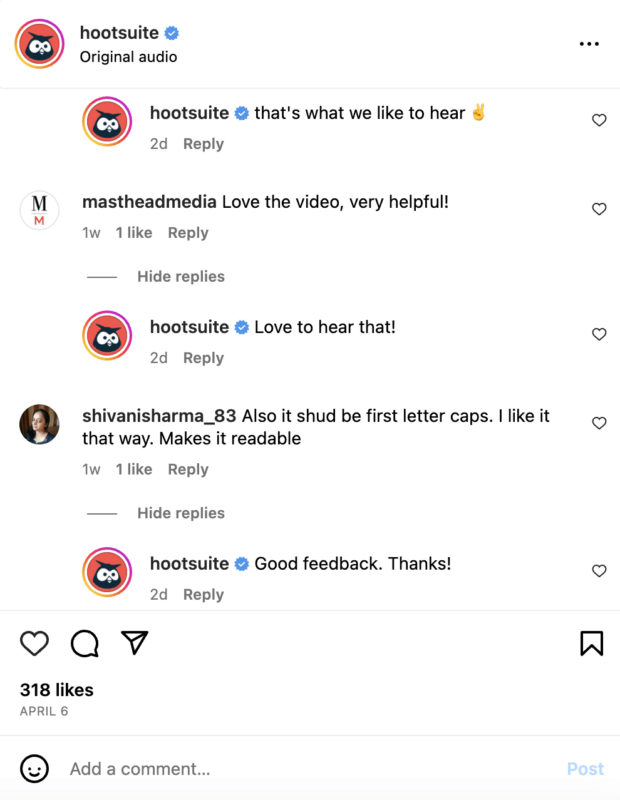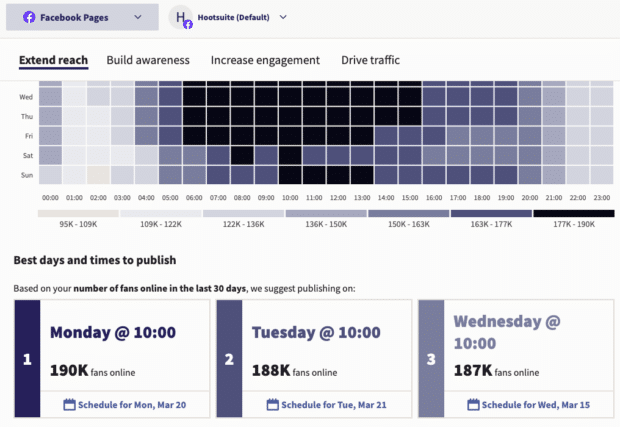We’ve all cringed at a brand’s tone-deaf post or hashtag fail. These social snafus often come down to a misunderstanding of unspoken social media etiquette.
Social media can seem informal, but if you’re not posting on your personal account, you still have to follow a few rules of engagement. Social media etiquette is more important than ever, especially now that brands are expected to be “human” and “authentic” online.
In this article, we’ll dive deep into the dos and don’ts of social media behavior for brands. From crafting the perfect tweet to handling a crisis, we’ll cover everything you need to know to ace your brand’s social media presence.
Social media etiquette is a set of conventions that dictate acceptable behavior for brands on social media platforms. These informal (often unspoken) rules outline how companies should present themselves, respond to feedback, and engage with their audience.
Brands that want to protect their reputations and build lasting customer relationships need to understand social media etiquette. Following these conventions can help you strengthen your online image and foster a sense of trust among followers.
Here are a few concrete reasons why a business should care about the dos and don’ts of digital etiquette:
Maintains your company’s reputation
Social media is a public forum, so anything you post is visible to the world. A post that violates these norms can tarnish a brand’s reputation and alienate followers.
Protects your brand from legal hurdles
If your brand operates in a regulated space and must adhere to strict privacy and compliance rules, social media etiquette can keep you on the right side of the law while still engaging with your audience.
Assists in navigating charged situations
Brands need to be prepared for a crisis. Clear etiquette guidelines can help brands respond appropriately, mitigate fallout, and protect your image.
Ensures your brand remains empathetic
Brands that ignore social media etiquette can come across as unprofessional or uncaring. This can lead to customer dissatisfaction and lost business.
To help your brand avoid any costly missteps, we’ve compiled a list of 15 social media etiquette blunders and how to avoid them.
1. Using hashtags like they’re going out of style
Have you ever seen a post with a list of hashtags that’s longer than the caption?
Overloading on hashtags often looks messy, but that’s not the only issue. Hashtags are important, but quality and relevance matter way more than quantity.
First: sure, hashtags can be an effective way to increase the visibility of your posts. But when used to excess, they can come across as spammy and annoying.
Too many hashtags can dilute your message and make it difficult for readers to follow the conversation. Plus, using irrelevant hashtags can make your content less discoverable.
Fortunately, this social media etiquette goof-up isn’t that hard to avoid. We’ve got a complete guide on how to use hashtags on every network (including how many to use).
2. Ignoring your audience’s messages and comments
Unlike many marketing channels, social media is a two-way street. Tuning out of the conversation by ignoring your followers’ messages, comments, or queries is a big no-no.
Social media is all about engagement and building relationships with your followers. When a brand ignores or hides comments, it looks like it doesn’t care — and people notice. That’s a surefire way to lose followers and hurt your brand’s reputation.
Plus, nobody wants to feel like they’re shouting into a void. When people take the time to comment or send a message to your brand, they expect a response.
That’s why it’s crucial to respond to comments and messages. A social media monitoring tool makes it easy for your team to respond promptly to all inquiries.

The Hootsuite social team shows how it’s done by replying to all comments and questions on their posts.
3. Generating fake engagement through spam bots
It can be tempting to boost your numbers by purchasing followers or using spam bots to like your own posts. But not only is this practical unethical, it can actually harm your brand’s reputation.
Fake engagement can create a false sense of success. You’re really only hurting yourself by artificially inflating your numbers.
Plus, bots are easy to spot. When an account with tons of followers gets almost no engagement, people get suspicious.
And it’s not just followers who will notice, either. Social media algorithms are getting smarter and can detect unauthentic engagement. This could lead to penalties and even account suspension.
Don’t risk your brand’s reputation. Instead, focus on creating valuable content for your actual audience.
Still tempted to buy followers? Before you whip out your credit card, check out our results:
4. Cross-posting without repurposing content for each platform
TikTok, Twitter, Facebook, Instagram, LinkedIn. Each channel serves a different purpose and caters to a different segment of your target audience.
Copying and pasting the same post across many platforms may seem like a time-saver. But it’s often a mistake. Cross-posting without repurposing doesn’t help build a brand’s credibility on that platform.
@hootsuite Times 👏 are 👏 changing 👏 Cross-posting across all social networks is so 2022… In 2023, it’s all about taking a strategic approach to cross-posting. Some videos might work across all social channels if you think your following on each platform can benefit from them. But not every video on TikTok needs to be posted on LinkedIn. This is your sign to do a deep dive into your unique audiences on each platform. Pay attention to the type of content they like to consume (long or short videos? thought-provoking or cheeky copy?), what their interests are, and the type of creators/brands they follow. Then brainstorm how you can deliver value and keep them engaged so they turn into a loyal follower. But, remember ⚠️ Cross-posting is a great way to maximize reach on a piece of content so we don’t want to throw this strategy out the window completely. Let’s be intentional with the content we’re creating and where we decide to post them! #socialmediamanager #smm #socialmediastrategy
If you’re going to cross-post, put some thought into it. Optimize your posts for each network’s unique algorithm. That means more engagement and a stronger brand presence across social media platforms.
5. Reacting hastily toward negative mentions of your brand
When you see negative comments or feedback about your brand, it can be tempting to lash out. A quick response is sometimes necessary. But in this (like so many other things), your mom was right: speaking before you think can cause more harm than good.
A thoughtful response takes time, especially if the criticism is valid. A careless response could heighten the tension, and that’s not good for any business.
A quick response can even escalate into a social media crisis for your brand. That means more negative mentions and a bigger public backlash.
Instead of firing up your keyboard, take a deep breath and step back. Research the issue, and craft a thoughtful response that addresses the concern. Make sure your response reflects your brand’s values and tone and remains respectful.
This will help diffuse negativity and can even turn an upset customer into a brand advocate.
6. Bad-mouthing your competitors, especially small businesses
While trying to “take down” other businesses may be tempting, it’s a tactic that can backfire.
We get it — you want to prove that your brand is the best around. But a mean-spirited approach often reveals just the opposite. Trash-talking the competition just makes you look insecure.
Followers expect social media to be a place of positivity, transparency, and authenticity. You don’t want to create a toxic environment that draws focus from your brand’s message.
Taking aim at smaller businesses on social media can be an especially bad look. These businesses often lack the resources to combat the negativity. It’s better to focus on creating great content, making your customers happy, and building your own reputation.
7. Trying too hard to engage in a conversation
Engagement is always good, right? Well, no. Forced engagement can quickly become overbearing, intrusive and alienating.
Remember that social media is a conversation, not a lecture. It’s not just about pushing out content. You also have to respond thoughtfully to comments and questions.
If you’re trying too hard to engage, you risk bombarding followers with irrelevant posts. This can make it difficult for followers to tell if you are listening or just posting for the sake of posting.
Pushing too hard can lead to irrelevant conversations or overly long threads. These can look like efforts to manipulate the algorithm by gaming volume. Keep conversations relevant and constructive when engaging with followers. Let the conversation flow naturally.
8. Failing to give credit for third-party content
Imitation isn’t always the sincerest form of flattery. Sometimes, it’s straight-up bad etiquette. Whether you are sharing someone else’s content, using a quote from an article, or posting an image, it’s important to make sure you’re attributing credit appropriately.
Without properly citing your sources, followers may assume that your brand has created the content. It also implies that you don’t understand or respect ownership rights.
Don’t forget to read up on the rules of usage before using any third-party content on social media. Each platform has its own set of rules for copyright infringement and use of content.
Instead of just reposting, consider incorporating collaboration posts into your social strategy. No worries about attribution when the creator gets a co-credit!
9. Holding strong opinions on a heated discussion
The internet is an open platform. Not everyone has to agree with your opinion — even if you believe it’s right or valid. Not all conversations need to be debates.
When expressing your opinion on a heated topic, it’s important not to be too confrontational or aggressive. Personal attacks reflect poorly on your brand in the long run.
And don’t forget that you’re not just speaking as yourself. When you manage social for a brand, you adopt the organization’s voice and communicate on its behalf.
When things get heated, focus on staying calm and offering constructive solutions.
10. Mixing up personal and business accounts
Most social media managers have more than one account linked to their devices. Unfortunately, that means that accidentally posting from the wrong account is entirely possible. In fact, it happens all the time.
And the fun part? No matter how fast you move to delete the mistake post, someone will always see it. (Remember Hozier as Handsome Squidward? Because the rest of the internet will never forget.)
If you want to avoid this issue entirely, a social media management platform like Hootsuite is the answer. When you schedule all of your posts from one central platform, you can be EXTRA certain you’re posting from the right account.
Try Hootsuite for free. You can cancel anytime.
11. Failing to disclose paid promotions and partnerships
Partnering with influencers or other brands is often a great idea. Still, it’s important to make sure that everyone involved is aware of the collaboration so there are no misunderstandings.
Failing to disclose such relationships can create a reputation for dishonesty. It may even violate ethical regulations set forth by many advertising codes. This misstep could lead to legal action from regulators.
To avoid these issues, include disclosure statements in all sponsored content posts.
12. Reacting to or resharing controversial viral posts
It can be tempting to ride the wave of a trending topic and engage your followers. Controversial posts that spark conversations can be entertaining, but they often contain false information.
If you want to look professional, participating in this type of conversation often isn’t a great idea.
Reacting to or resharing these posts will encourage more people to join in on the discussion. You don’t want to escalate the situation and make things worse for everyone involved. Play it safe and avoid getting involved in debates about sensitive topics.
13. Using humor inappropriately
Unless you’re Wendy’s, refrain from going too deadpan with your humor. Especially on sensitive topics such as politics, religion and race.
When dealing with delicate topics on social media, respect is key. Skip the jokes and focus on delivering informative, thoughtful responses.
This shouldn’t deter you from using humor to your advantage. You don’t need to be boring — just don’t cross the line.
14. Appearing politically biased
As a business, neutrality is important when it comes to controversial topics and debates. Customers come from all backgrounds, beliefs, and values. Alienating any subset of your potential followers can damage your brand’s image and reputation.
Keep the focus on your product or service and avoid the risk of offending your user base.
There may be some benefits to aligning with certain causes, but these decisions require careful thought.
15. Posting too frequently or at the wrong time
Posting a lot of content in a short amount of time can quickly become overwhelming for followers. And if you post at the wrong times, your audience may miss the content entirely.
Balance posting enough content to engage your followers while avoiding flooding their newsfeeds. The best way to do this is to post when your audience is most active. This will help you maximize engagement on each post and ensure that users see the message at the right time.

Hootsuite can help you figure out the best time to post for your unique audience, depending on your goals and past posts. It’s the handiest way to make sure you’re making the most of social media.
Remember, less definitely is more on social media — if you focus on the right thing. As we mentioned before, quantity doesn’t trump quality. When deciding post frequency, follow what works best for you.
Following these social media etiquette rules is easy with Hootsuite. Schedule and publish posts, track online sentiment, engage your followers, and track the success of your efforts — all from one dashboard. Try it free.
With files from Vanhishikha Bhargava.
Do it better with Hootsuite, the all-in-one social media tool. Stay on top of things, grow, and beat the competition.
Free 30-Day Trial




